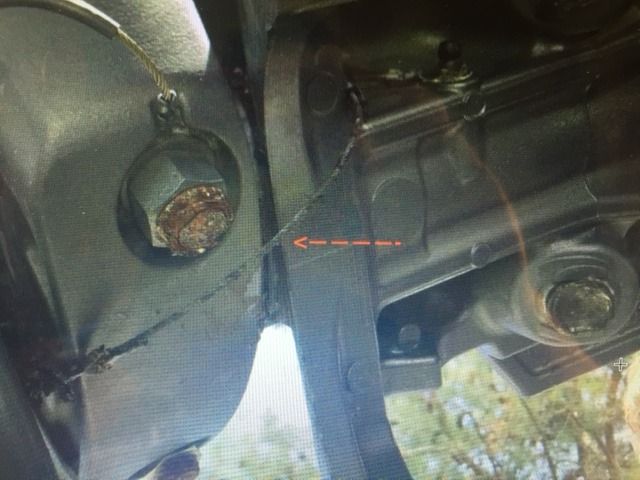It's been a rough couple of weeks in my boating life. Two weeks ago, I was almost killed when the throttle stuck on my skiff's Yamaha 25hp sending me into a circle of death and crashing into a duck blind. A few days ago an open circuit caused a small explosion/melt down on my bigger boats Yamaha F150 port side engine.
I'm still tracing down the source of the short. It'll most likely be a corroded contact point, or loose connection somewhere in the line.
Below is the wire that melted after I turned the starboard battery switch to ALL. Instantly, a significant amount of smoke poured out from under the power head which caused a scramble for the fire extinguisher on my part. The wire is part # is 66K-82149-00-00.

A couple questions:
1. What purpose does this wire serve? I'm under the impression that the grounding wire is the one right above the melted wire in the pic.
2. I found that the 10A fuse inline with the ground wire connected to the negative starboard battery terminal had a fair amount of corrosion on the male prongs. Could this cause an open circuit that induced the melt down?
3. Has anyone ever changed this wire out. The mechanic that works at the Yamaha Service Center where I bought the replacement wire said it won't be easy. I haven't started that process yet.
Thanks for any feedback, it's truly appreciated.
I'm still tracing down the source of the short. It'll most likely be a corroded contact point, or loose connection somewhere in the line.
Below is the wire that melted after I turned the starboard battery switch to ALL. Instantly, a significant amount of smoke poured out from under the power head which caused a scramble for the fire extinguisher on my part. The wire is part # is 66K-82149-00-00.

A couple questions:
1. What purpose does this wire serve? I'm under the impression that the grounding wire is the one right above the melted wire in the pic.
2. I found that the 10A fuse inline with the ground wire connected to the negative starboard battery terminal had a fair amount of corrosion on the male prongs. Could this cause an open circuit that induced the melt down?
3. Has anyone ever changed this wire out. The mechanic that works at the Yamaha Service Center where I bought the replacement wire said it won't be easy. I haven't started that process yet.
Thanks for any feedback, it's truly appreciated.






Comment